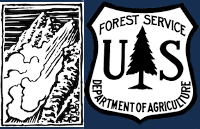Snowpack and Avalanche Discussion
<p><span><span><span><span><span><span>Today’s avalanche concerns are all going to within the 5-9” of new snow that fell since Wednesday morning. </span></span></span></span></span></span></p>
<p><span><span><span><strong><span><span>Wind Slab avalanches</span></span></strong></span></span></span><span><span><span><span><span><span> are the primary concern. The new snow has been drifted into cohesive slabs by north and east winds since snowfall began. With an easterly component to the winds, be on the lookout for drifts in unusual locations. Some of these drifts will be easily triggered today and some will have already started to bond. Steering around the deepest wind drifts is an easy way to avoid much of the avalanche hazard today. You can also quickly dig down to check how well they’ve bonded to the old snow surface. Cracks shooting out in front of your skis or sled are clear signs you’ve found an unstable drift.</span></span></span></span></span></span></p>
<p><span><span><span><span><span><span>With clear skies today, the new snow will get wet on sunny slopes and you’ll be able to trigger </span></span></span></span></span></span><span><span><span><strong><span><span>Wet Loose avalanches</span></span></strong></span></span></span><span><span><span><span><span><span>. These slides will run on top of the hard crusts underneath the recent snow. Feel for the snow surface getting wet and sticky and look for rollerballs and pinwheels as clear signs that Wet Loose avalanches are imminent. Most of these slides probably won’t have enough volume to bury you, but they can still be surprisingly powerful, plenty strong enough to push you off a cliff or into rocks. Plan to move off steep sunny slopes later in the day, as the snow gets wet.</span></span></span></span></span></span></p>
<p><span><span><span><span><span><span>With both wet and dry avalanches possible, the avalanche danger is MODERATE today.</span></span></span></span></span></span></p>
<p><span><span><span><span><span><span>With little new snow and a firm, solidly refrozen crust underneath, avalanches are unlikely and the avalanche danger is LOW. </span></span></span></span></span></span></p>
<p><span><span><span><span><span><span>Look out if you find more than a skiff of new snow, in which case you might be able to trigger small Wind Slab or Wet Loose avalanches. </span></span></span></span></span></span></p>
